Fused Deposition Modeling (also known as FDM), is the most commonly used 3D printing technology for everyday makers and consumers. In this article, 3DSourced explain: the history of FDM; how to set up an FDM 3D printer; the FDM printing process; and which 3D printer filaments and materials to use.
Moreover, this guide also explains why different printers cost such different prices, the main indicators of an FDM 3D printer’s performance, FDM vs SLA and Selective Laser Sintering; FDM’s applications; and advantages and disadvantages of FDM.
View all our other 3D technologies guides here.
This guide is also part of our FREE 3D printing technologies EBook. You can download it here.
Approx: 6 minute read.
Fused Deposition Modeling: Explained
We have included a number of infographics and videos in addition to images to try and help you understand the process. There is a summary at the end which concisely explains everything again.
FDM vs FFF
Fused deposition modeling is sometimes called fused filament fabrication, or FFF. These 3D printing processes are the same, but we will use FDM in this article. If you see FFF 3D printer written anywhere, it is an FDM 3D printer.
FFF is the name given to the production process, though Fused Deposition Modeling was the name trademarked by Stratasys when they invented the process. The name FDM has stuck over time.
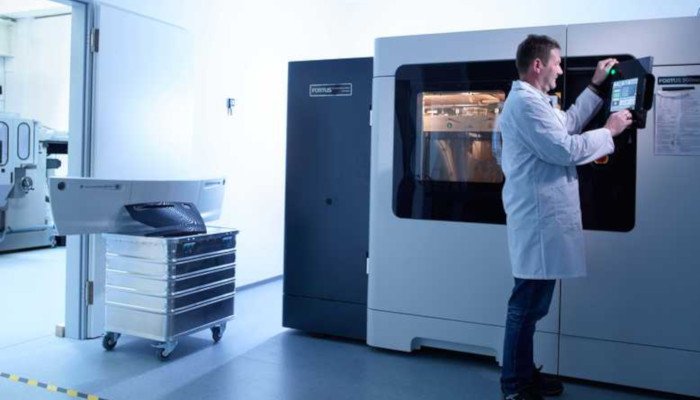
What is FDM? A Very Quick Introduction
Fused deposition modeling falls under the wider Material Extrusion umbrella. Like Selective Laser Sintering, FDM uses thermoplastics to print parts. The difference between these two however is that FDM uses filaments, whereas SLS uses powders. Stereolithography differs from both as it uses thermosets, called resins.
History of FDM
FDM has been around since the beginning of the history of 3D printing. Fused deposition modeling was developed by S. Scott Crump in the late 1980s before he founded Stratasys. With Stratasys, Crump commercialized FDM in 1990, and the successful 3D printer company continues to make FDM 3D printers to this day.
Another big year for 3D printing using fused deposition modeling was 2005, the year RepRap 3D printers started to take off. The RepRap movement is based on the open source community and involves 3D printing the parts of your own 3D printer, and assembling them yourself. Once you have 3D printed your own 3D printer, you are morally obliged to print the pieces to another three printers for other people as per the RepRap code.
2009 marked the year when the first fused deposition modeling patents expired, allowing enthusiasts to develop their own DIY 3D printers and commercialize them. Companies such as Makerbot and Lulzbot became hugely successful for making DIY printer kits, with Makerbot becoming the $400M-valued giant that it is today.
You can read more about the history of 3D printing here.
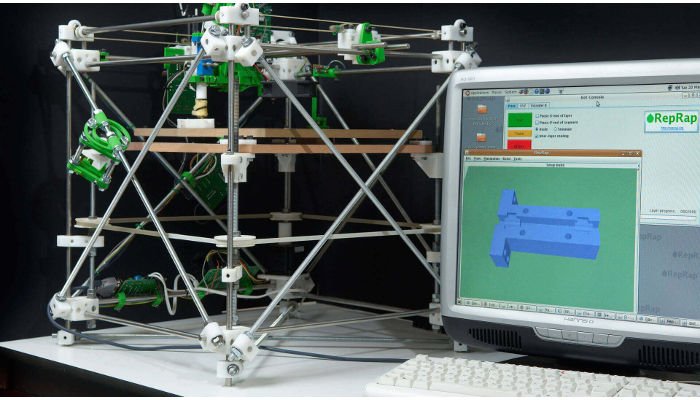
Setting up an FDM 3D printer
To print anything on your FDM 3D printer, you’ll first need a 3D file. Usually an .STL file — the 3D printer model — you can either download these from sites such as Thingiverse or Shapeways, or design them on a 3D software program such as SolidWorks or SelfCAD.
Once you have your .STL file, you need to use a 3D slicer tool such as Cura to slice the file into layers. These are the individual layers the 3D printer will print, one at a time, until the three-dimensional model is finished. Once sliced, you just need to choose your printing parameters, and press print!
There are four main types of FDM 3D printer: Cartesian, Delta 3D printer, Polar and Scara, and they all work slightly differently. We’ve written a full guide on each type of FDM 3D printer here for those who want to know the differences.
Some FDM printers we recommend:
FDM 3D Printer Buyer Guide
| Name and Brand | Build volume (mm) | Dual extruder? | Price | Best Price At: | Alternative Purchase Option |
|---|---|---|---|---|---|
| Creality Ender 3 V2 | 220 x 220 x 250 | No | $249 | Creality Store here | Amazon here |
| Voxelab Aquila | 220 x 220 x 250 | No | $159 | Amazon here | |
| Anycubic Kobra | 220 x 220 x 250 | No | $299 | Anycubic here | Amazon here |
| Creality Ender 3 S1 Pro | 220 x 220 x 270 | No | $429 | Creality Store here | Amazon here |
| Prusa Mini | 180 x 180 x 180 | No | $429 | Prusa Store here | |
| Anycubic Vyper | 245 x 245 x 260 | No | $429 | Anycubic Store here | Amazon here |
| Creality Ender 5 Plus | 350 x 350 x 400 | No | $579 | Creality Store here | Amazon here |
| Flashforge Creator Pro 2 | Yes | $649 | Flashforge here | Amazon here | |
| Prusa i3 MK3S | 250 x 210 x 200 | Can be upgraded | $749 / $999 | Kit available on Prusa store here | Prusa Store here |
| Snapmaker 2.0 | 3 size options | No | $1,199-$1,799 | Snapmaker here | |
| Ultimaker S3 | 230 x 190 x 200 | Yes | $3,850 | Dynamism Store here | Matterhackers here |
| Ultimaker S5 | 330 x 240 x 300 | Yes | $5,995 | Dynamism Store here |
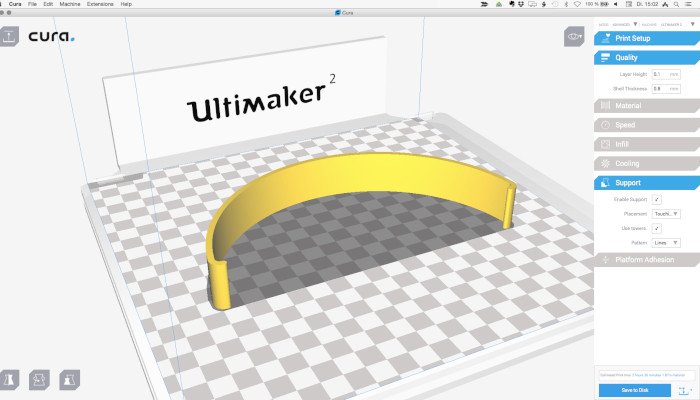
Choosing the Best Printing Parameters with FDM
The quality, surface finish, strength and speed of print will vary heavily depending on your printing parameters. Here are some key areas to make sure you’ve optimized for the results you want:
Print speed: Yes, 3D printing can feel like it takes a long time. But speeding your printer up too much creates print errors (corners falling in, collapsed parts) and generally reduces part quality and surface finish.
Errors like in the picture shown below can occur if print settings are set incorrectly.
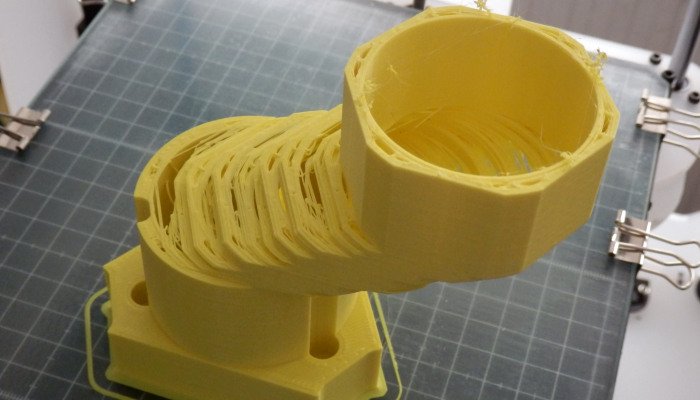
Layer height: Lower layer height will generally mean smoother finish, though a far slower print. However, there are scenarios where you can use huge layer heights, speed up printing, and not suffer any adverse effects. It all depends on what you’re printing. The general rule is if you’re printing something very intricate, for example a face or piece of 3D printed jewelry, use the lowest layer height possible. However, if you’re printing something like a big cube, you can use big layer heights, print it quick, and not suffer a noticeable drop in quality.
Nozzle diameter: This isn’t technically a parameter but a piece of kit, but it’s important for how you print. 3D printers usually use 0.4mm diameter nozzles, but anything finer than this — such as extremely detailed text — may still be unprintable unless you buy a 0.2mm nozzle. Check the nozzle you’ve got on your printer and optimize based on this. Smaller nozzle diameters create smoother surface areas and more detail, but as with lower layer heights, take longer to print.
- There are also four different types of FDM 3D printer, which all vary slightly. We have a full guide here on each of the types of 3D printer.
Infill: FDM parts aren’t printed solid — it’d cost way more and there’s diminishing returns with how much strength a part really needs. The norm is 20% infill, which still creates parts stronger than those created with SLA while saving money and time. If you only need a very rough prototype, 10% will sometimes do, though in other situations where a sturdy model is needed, 80% is sometimes used.
Read more: 3D printer infill guide
Printing Supports: If you have a part with overhangs, you’ll need supports or your part will collapse and deform. Dual extruder printers do this with ease, and can print supports in dissolvable filament such as HIPS or PVA.
3D Printing with Fused Deposition Modeling
Fused deposition modeling involves feeding a thermoplastic filament into the 3D printer, with any supports or other materials if it is a dual extruder 3D printer. The filament is heated to its melting point — around 200ºC, though this depends on the material — through a heated nozzle and then extruded on to the build platform, tracing the part dimensions specified by the STL file.
As the first full layer is finished, the print head moves up by one layer height, before tracing the next layer. This continues, layer-by-layer, until the part is complete.
Once deposited, the filament solidifies to form a solid part, with each layer cooling before being heated briefly again when the layer on top of it is deposited. The layer sizes depend on your preferences, but are usually around a sixteenth of an inch.
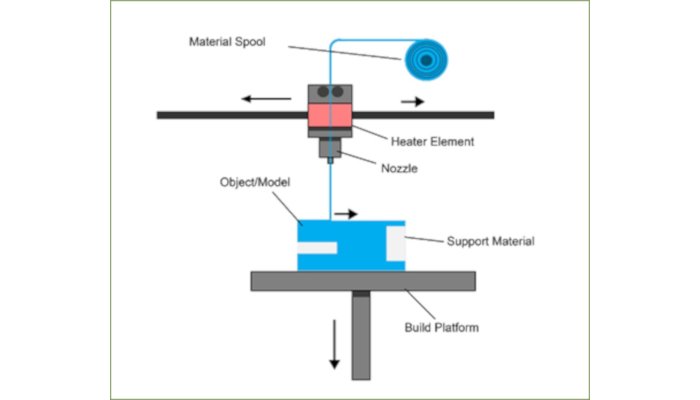
Color FDM 3D Printing
Some 3D printers have the ability to 3D print color. An FDM 3D printer that does this is the Da Vinci Color by XYZPrinting, which can print 10 million different colors! If you have a dual extruder 3D printer then you can also print two colors or two materials simultaneously.
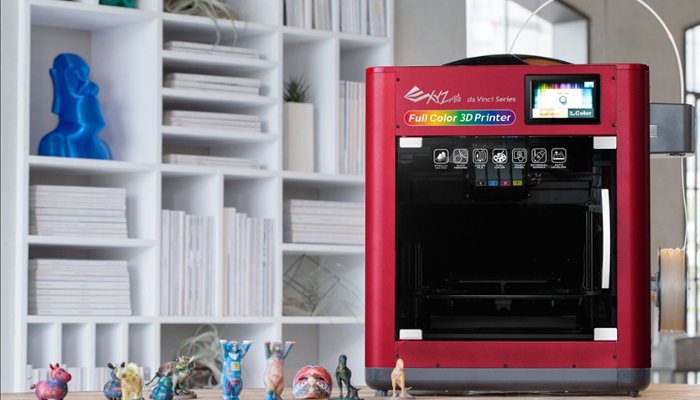
Removing Supports & Minimizing Warping with fused deposition modeling
Minimizing Warping
One thing you must be careful of with FDM 3D printing is warping. Parts can warp when using FDM because parts of the model cool at different times, creating tension. Due to this, sections of the 3D printed model can contract and shrink, affecting print quality and surface finish.
This can be minimized with: good bed adhesion, and a heated bed. Both of these help to anchor the part down, reducing warping and stress on the part.
More expensive 3D printers will have a more controlled printing environment to further mitigate against warping. For example, they will have settings tailored to each filament material, and have the ability to change humidity and temperature settings to cool the part down far more slowly. This slower cooling process means the part will be far less likely to warp or contract. Closed build chamber printers have advantages in this regard.
Read more: how to prevent warping
Removing Supports
FDM 3D printers use supports — made from either HIPS or PVA usually — for any model that overhangs more than 45 degrees. These can be removed in two ways; firstly by soaking the model in a mix of water and detergent solution (if the support material is dissolvable). The other way is to simply snap off the supports with your hands, though this risks damaging the print.
You can also sand the print for a smoother finish, or paint it for a nicer look.
Fused Deposition Modeling Materials & Filaments
Fused deposition modeling 3D printers use filaments which are thermoplastics that come in spools. The spool of filament is fed into the FDM 3D printer. These 3D printer filaments usually come in sizes of either 1.75mm or 3mm diameter.
- This is a brief outline to some of the most common filaments. We also have a full guide on every 3D printer filament here.
PLA: A commonly used material is PLA (Polylactic Acid) — a biodegradable plastic formed by cornstarch or a similar vegetable. A positive of using PLA is that it is more environmentally friendly as it is a renewable raw material, which is why it also has wide applications in food packaging.
You can print PLA on a 3D printer without any serious changes — you don’t require a heated bed like you would for 3D printing ABS. It also melts at a low and safe temperature, around 150°C. However, PLA prints are generally more fragile than those in ABS.
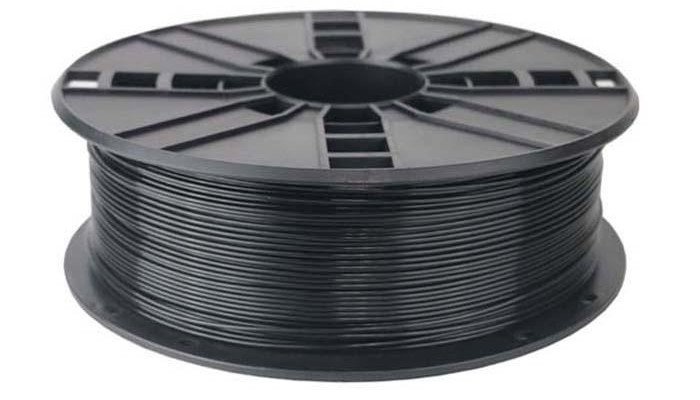
ABS: The most common material used with FDM is ABS. ABS material is a polymer which is also used in household items like Lego, and is popular because it is inexpensive, offers good chemical resistance, and is fairly strong. You print with ABS you need to heat it to its melting point — around 200°C — a relatively safe and low temperature compared to some tougher filaments, though higher than PLA.
However, to print with ABS you need an FDM 3D printer with a heated bed, or your print will warp significantly.
- We also have a full, detailed article explaining the differences between PLA and ABS.
Other materials you can use include PC (polycarbonate), Nylon, TPU, PEEK, and many other filaments for specialized types of FDM 3D printing.
Basic polymer filaments such as ABS and PLA are the cheapest, usually around $25 per kilo. However, expensive, high-quality filaments such as PEEK can cost much more, up to $500 per kilo.
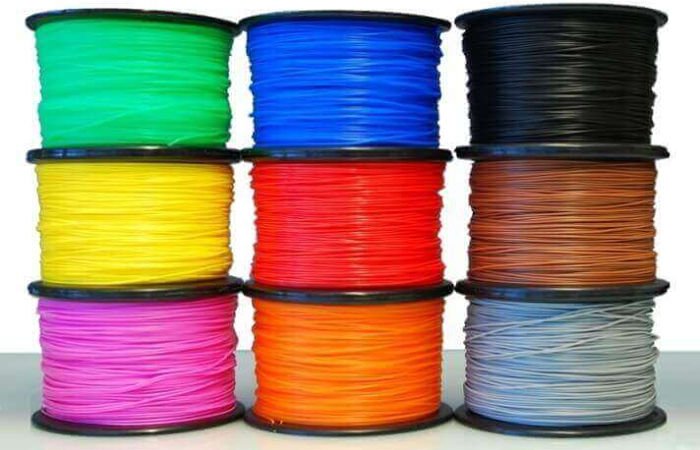
Support materials can either be made from the same material as used in 3D printing, or from PPSF, PVA, or HIPS. If you are using a dual extruder 3D printer, the other extruder can print supports in these other materials concurrently. Any areas which were previously covered by removed supports will have a noticeably smoother finish than those that were not.
For more information about materials and extruders, check out our 3D printer extruder guide.
Best FDM Filaments?
Here are a few highly rated filaments, with links to where you can buy them cheaply:
- Hatchbox PLA filament is cheap yet effective, at around $20/kg. You can purchase it here.
- If you’re interested in interestingly colored filaments, here are some that come in gold, silver and copper colors.
- For printing supports, we recommend HIPS. You can purchase it here.
FDM 3D Printer Price
Fused deposition modeling is the most affordable 3D printing technology, making it ideal for beginners and hobbyists. Due to this, it is the most commonly used 3D printing technology.
FDM 3D printers can start at around $200 to $300 for basic 3D printers such as the Creality CR-10, or Da Vinci Mini by XYZprinting. RepRap 3D printer kits start at around this price, though a Prusa 3D printer will cost you just under $1,000. DIY 3D printer kits such as the Creality Ender 3 offer a good mix of quality and low cost.
- We recommend our ranking of the 10 Best FDM 3D Printers.
Medium-range FDM 3D printers can cost $2,000 to $3,000. These include 3D printers by brands such as Makerbot, Ultimaker and Zortrax. They are more professional and higher quality, but cost more as a result.
Professional FDM 3D printers such as those by Stratasys cost far more, ranging from $10,000 to $300,000! These printers print much higher quality (accuracy >50 microns) and 3D print fast, but cost far more as a result.
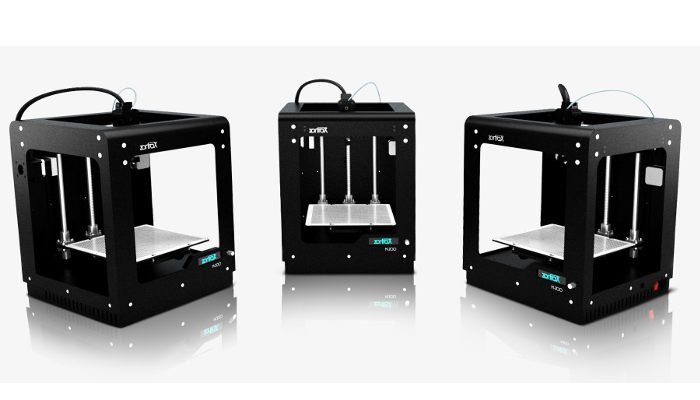
FDM 3D Printer Performance
Though affordable, accessible, and simple to use, FDM / FFF 3D printers lack in some areas. Firstly, they are slow. Due to tracing each layer slowly, larger prints the size of a vase can take 12 hours. If you are looking to 3D print with speed, you are much better off with SLA or SLS, or even with Carbon 3D’s CLIP technology for super high speed printing!
Furthermore, the print quality is adequate, but not great. Though the best FDM 3D printers are accurate up to around 50 microns, this is not ideal and sometimes you can still see the layers on a model. 3D printing technologies such as SLA and Binder Jetting are better for high-quality printing as they offer higher precision and quality overall.
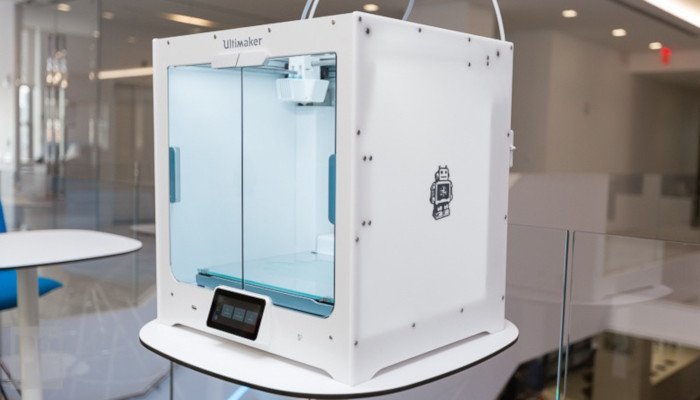
Applications of FDM
Fused deposition modeling is great for rapid prototyping as it can produce cheap copies of designs. Therefore, this is the main use of FDM, though it has some use in aerospace, medical, and art sectors too.
Well-known companies such as BMW, Hyundai, and Nestle are known for using FDM in their processes. This is in rapid prototyping to create protypes quickly to measure their effectiveness.
Additionally, there are some fantastic individuals and companies who are using FDM to create low cost 3D printed prosthetics for those in need.
- We have a full feature story written about the applications of 3D printed prosthetics and how they could change the lives of 30 million people worldwide.
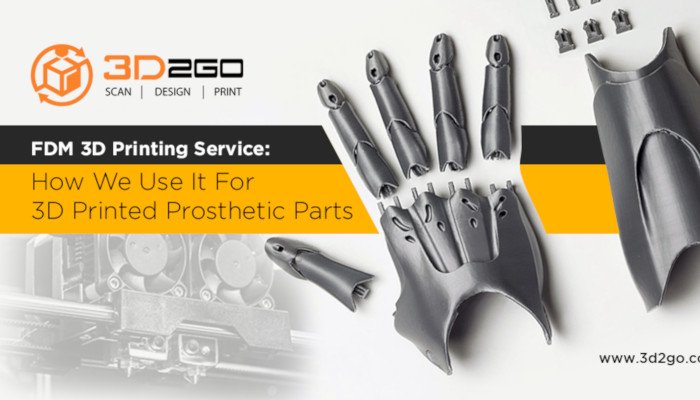
Beyond industrial applications, FDM is the choice for most makers who like to tinker with models and print them at home. If you’re looking to get a cheap 3D printer to try things out, absolutely start with fused deposition modeling.
Advantages and Disadvantages of FDM
FDM Advantages
- FDM is a cheap and accessible 3D technology. This makes it perfect for beginners to 3D printing. It’s also the most commonly used rapid prototyping technology due to its ease of access.
- The technology is simple to use, and printers are often user-friendly. This is because FDM is mostly a consumer rather than industrial 3D printing process so effort is made to make the 3D printers easy to use.
FDM Disadvantages / FDM Limitations
- The print quality of FDM / FFF 3D prints are not as good as those by SLA or SLS.
- 3D printing with fused deposition modeling is slow. This makes it unusable in some industries when large numbers of parts are needed quickly.
- The layer-by-layer printing in FDM can sometimes lead to problems with warping and minor shrinking.
Therefore to summarize, FDM is a great 3D printing option for beginners due to its simplicity and cheap cost. However, for users looking to print large numbers of models quickly, and at very high quality, you are better off elsewhere.
If you enjoyed this guide, be sure to check out the other guides and rankings on our site.

















2 thoughts on “Fused Deposition Modeling: Everything You Need To Know About FDM 3D Printing”
Comments are closed.